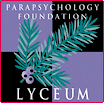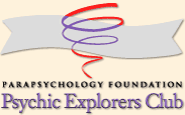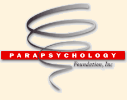 |
 |
| THE BIOGRAPHICAL DICTIONARY OF PARAPSYCHOLOGY SIR WILLIAM FLETCHER BARRETT Physicist; a principal founder (1882) of the Society for Psychical Research, London; president SPR, 1904. B. February 10, 1844, Jamaica, British West Indies; d. May 26, 1925, London. Educ. Old Trafford Grammar School, Manchester; private study. Science master, International Colleges, 1867; physics lecturer, Royal School of Naval Architecture, 1869; professor of physics, Royal College of Science, Dublin, 1873-1910. M. 1916, Dr. Florence Willey (d. 1945). Knighted 1912. Fellow: Royal Society, Philosophical Society, Royal Society of Literature; member: Institute of Electrical Engineers, Royal Irish Academy. At age 19, Barrett's scientific aptitude won him a place as assistant to the famous physicist John Tyndall. In 1899 he developed a widely useful silicon-iron alloy know as stalloy, important to the commerical development of the telephone and in construction of transformers, dynamos and other apparatus related to electrical engineering. His researches on entoptic vision (1905-7) led to invention of the entoptiscope and a new optometer. In 1876 Barrett submitted a paper to the Bristish Association on the possibility of thought transferrence, a field in which he had been experimenting since 1863. Scientific opinion was generally skeptical, and in 1882 Barrett, aware of informal investigations under way on telepathy and allied subjects among a group at Cambridge University, called a conference to set up an organization for formal research. With Frederic W. H. Myers, Edmund Gurney, Henry Sigwick (qq.v.) and other, Barrett launched the Society for Psychical Research, whose state purpose was to make "an organized attempt to investigate that large group of debatable phenomen designated by such terms as mesmeric, psychical and spiritualistic." Barrett edited the SPR Journal 1884-89. His contributions to the Journal and the SPR Proceedings spanned half a century, from his report on his early experiments in telepathy in the first volume of the Proceedings to his "Some Reminiscences of Fifty Years' Psychical Research" in 1924 (SPR Proceedings, Vol. 34). In 1885 he helped to organize the American Society for Psychical Research as part of the British organization (although the later ASPR became an independent body). Barrett's wide interests included telepathy, mediumship, poltergeists, apparitions and ouija-baord writing, but perhaps his most intensive work resulted in a two-volume Monograph on the So-Called Divining Rod (1897-1900). In 1926, Lady Barrett, in sittings with the medium Mrs. Osborne Leonard (q.v.), received what she believed were communications from her late husband. These she published in the book Personality Survives Death (1937). Barrett's books dealing with psychic research include Thought-Transference (1882); On the Threshold of a New World of Thought (1908); On Creative Thought (1910); On Psychical Research (1911); On Swedenborg (1912); On the Threshhold of the Unseen (1917); Deathbed Visions (posthumous publication 1926). Taken from Helene Pleasants (1964) Biographical Dictionary of Parapsychology with Directory and Glossary 1946-1996 NY: Garrett Publications |
 |

|
 www. parapsychology. org |
||